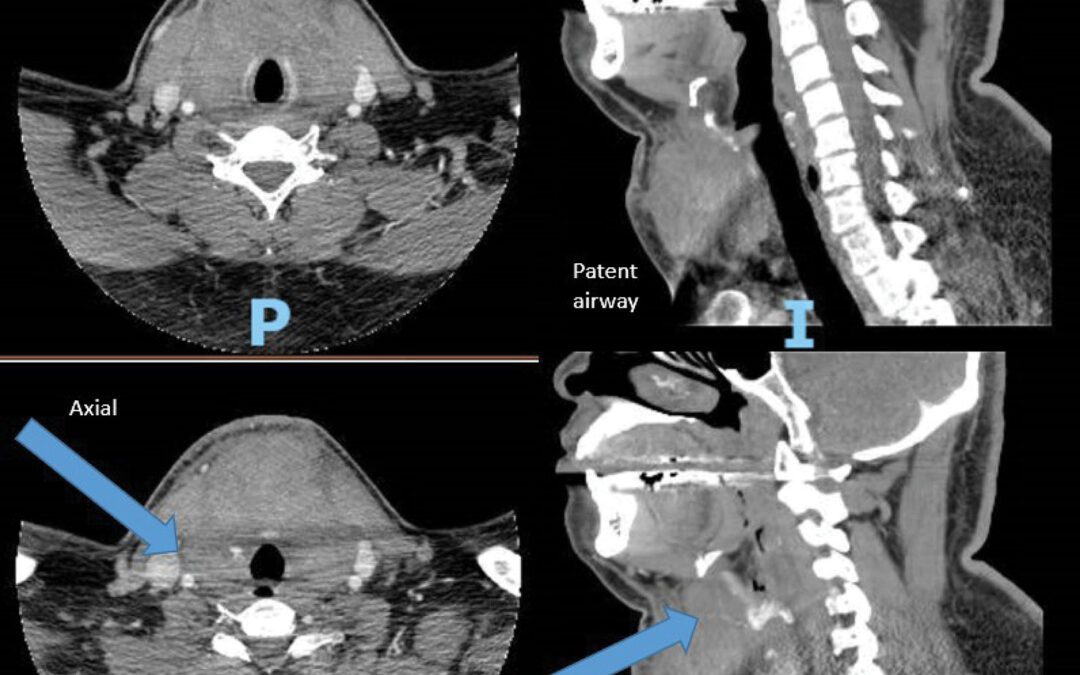Most people think of a hematoma as just a bruise – a collection of blood under the skin. But when a large blood clot develops deep in the neck, especially after a surgery like a thyroid removal, it can turn into a medical emergency within minutes.
A neck hematoma can grow quickly, pressing on the airway and making it impossible to breathe. Without immediate treatment, patients can suffer permanent brain damage or even death.
At Bell Law Firm, we’ve seen the tragic outcomes when doctors fail to recognize the warning signs or delay life-saving care. Here’s what patients and families need to know.
Why Neck Hematomas Are So Dangerous
The problem is caused by the tight space inside the neck. Since the neck offers little room for the blood to expand outward, the growing mass of blood squeezes the vital structures nearby, particularly the windpipe (trachea).
This suffocation happens primarily in two major ways:
- Direct Pressure on the Windpipe
The collection of blood acts as a growing mass. This mass directly pushes or shifts the windpipe to the side, which can cause it to “kink” or deform, making it very hard for air to pass through.
- Internal Swelling from Blocked Drainage
More importantly, the blood clot interferes with the body’s drainage system. The clot presses against the major, low-pressure vessels in the neck, specifically the internal jugular veins and the lymphatic channels (which carry fluid out of the head and throat).
When this drainage system is blocked, fluid backs up, causing the tissues inside the throat, such as the vocal cords and the surrounding structures, to swell dramatically. This severe internal swelling closes the air passage, leading to obstruction.
In one documented case, this rapid progression led to respiratory arrest (breathing stopping) due to an expanding left neck hematoma. The lack of oxygen caused irreversible brain damage, complicated by severe brain swelling and shifting inside the skull.
Warning Signs to Watch For
Because an expanding neck hematoma is one of the most time-sensitive emergencies in medicine, prompt recognition is vital. The patient may feel a sense of internal strangulation.
Key signs to watch for include:
- Neck Swelling/Lumps: Swelling or a palpable mass (lump) often localized to the side of the recent surgery.
- Color Changes: Bruising (ecchymosis) or dark discoloration of the skin in the neck and face area.
- Breathing Trouble: Difficulty breathing, labored breathing, or making a harsh, vibrating noise (stridor).
- Choking Feeling: Neck pain, pressure, or a choking sensation.
The Immediate Life-Saving Action
For a patient whose breathing is threatened by a rapidly expanding neck blood clot, immediate intervention is essential.
The national standard of care follows that when a neck hematoma threatens a patient’s airway, the first and most critical step is to immediately open the surgical incision to release the trapped blood to relieve any pressure.
This immediate procedure involves cutting the stitches (sutures) on the neck. Cutting the sutures provides an escape route, instantly decompressing the space and removing pressure from the windpipe and the vital neck vessels. This process often provides immediate relief to the patient and restores the airway.
It is essential to recognize that surgical drains (tubes inserted during surgery to collect fluid) do not prevent or manage thick, clotted blood that forms a hematoma. If the blood clot is threatening the ability to breathe, immediate action at the bedside may be necessary at a moment’s notice.
The catastrophic consequences of an airway-threatening hematoma emphasize the importance of prompt, decisive medical response, as the difference between life and death can be measured in minutes.
At Bell Law Firm, we have seen the results when warning signs are missed or treatment is delayed.
Airway-compromising hematomas require immediate recognition and decisive action. Anything less puts lives at risk. If you or a loved one suffered harm due to delayed treatment, you may have legal options. We offer free consultations to answer any questions you have and evaluate your potential case. Contact us today to explore your options.

